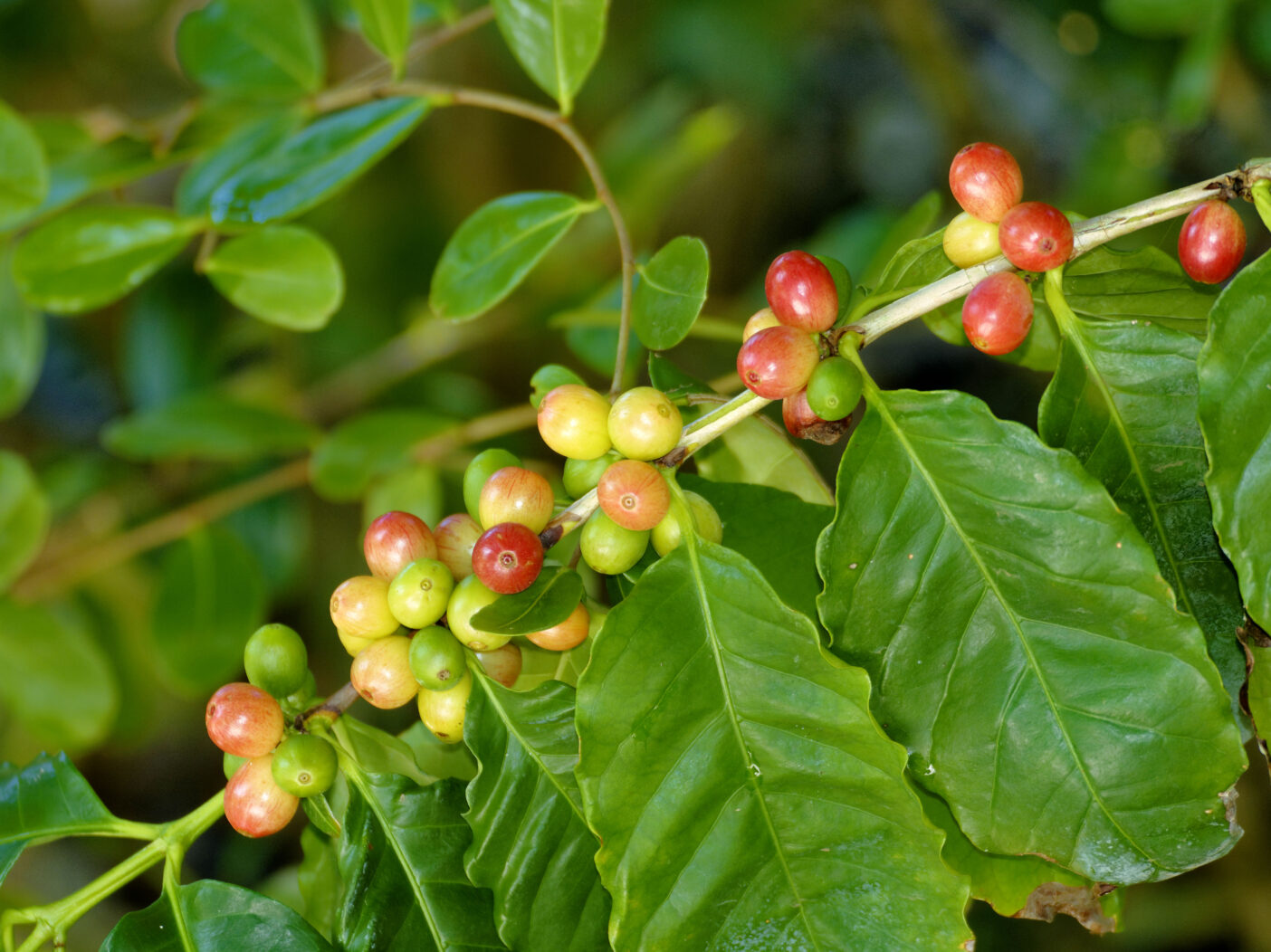
Can you imagine a morning without caffeine? Yeah, neither can we! It’s self-evident the effects coffee, tea, and even chocolate have on us. But, have you ever considered why these three plants produce the substance? Do they — like us — get a kick from caffeine?
The answer, like coffee’s flavor, is complex.
Caffeine is not essential to a plant’s ability to survive, and there are species of our favorite sources of caffeine that do not produce the compound. If that’s the case, then there must be an evolutionary advantage to producing the chemical.
And there is. The more than 30 plant species that produce caffeine have a leg (or, shall we say, “stem”) up on other plants: they’re less likely to be eaten; competing plants avoid sprouting in their space; and pollinators appear to remember them.
Chemically speaking, the stimulant is a pesticide. Caffeine is thought to ward off herbivores by helping make the plant dangerous to, and in some cases killing, the insects that feed on the caffeine-containing plant parts. In tea, for example, younger leaves have a higher concentration of caffeine to protect them, but as they get older and less appetizing, the concentration lessens.
Caffeine can also deter unwanted neighbors by leaching into the soil. Scientists studying coffee seeds and seedlings have found that caffeine increases in the soil as a seed germinates and the seedling grows. They believe this helps inhibit other seeds from germinating, weeding out competition. Though the seedling at first has a low caffeine level, over time it rises to help ward off predators.
Some plants, including coffee, even include doses of caffeine in their nectar. It is doubtful they are out to poison their pollinator. More likely, they want to boost the pollinator’s memory to make sure it remembers the flower and comes back. Non-toxic doses of caffeine have certainly encouraged humans not only to remember tea, coffee, and chocolate, but cultivate them.

Humans began cultivating chocolate, which hails from Central and South America, before 1000 BCE. The history of tea probably goes back almost as far as chocolate’s, if not further. Chinese emperor Shennong is said to have discovered the beverage around 2737 BCE when leaves were blown into his water, changing its color and taste. Tea likely originated in the area that is today Northern India, Northern Myanmar, Tibet, and Southwest China.

Coffee was the most recent to be cultivated. Coffea arabica, the most–used species of coffee, is native to Ethiopia. When exactly it first was domesticated is uncertain, but legend says a goat herder discovered the plant and the benefits of its cherries in the 9th century when he noticed the behavior of his goats after they ate some. Coffee was in cultivation for certain by the 1400s when the first plantations were started in Yemen.

One thing these caffeinated concoctions have in common is that humans focused on using the caffeine containing parts of the plants. It is important to remember, however, this plant product wasn’t meant for us. Though we benefit from it, each plant produces caffeine to help itself. Being stationary, plants must use whatever means necessary to defend and propagate — including chemistry.
 About the Author
About the Author
Patrick Deja is an Education Programs Assistant at Naples Botanical Garden. When not at the Garden, he loves to spend time with his wife and daughter. He also enjoys traveling and learning, whether it is about plants, history, language, or science.


